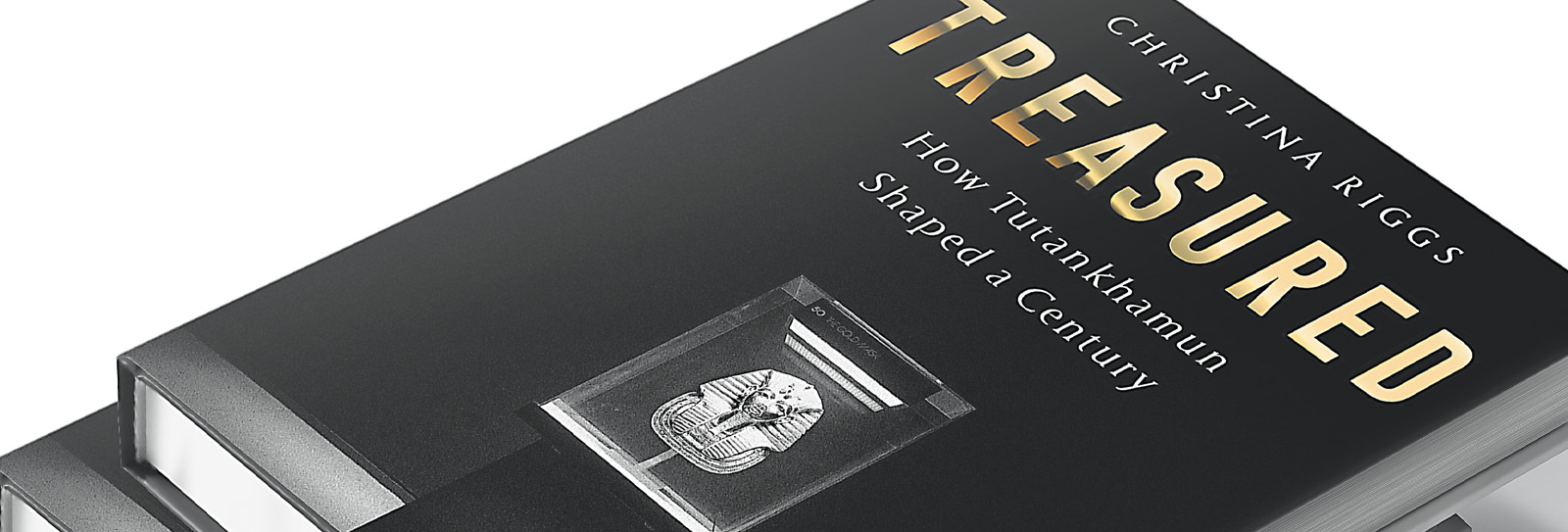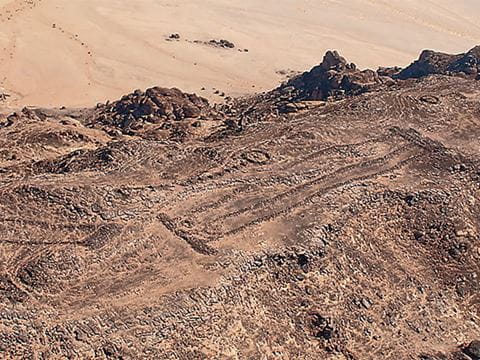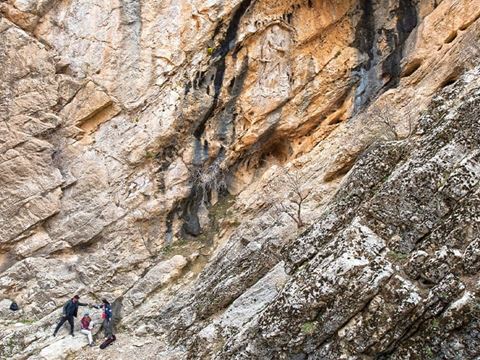
Author Christina Riggs on How Tutankhamun Shaped a Century
In Treasured, Riggs, a professor of the history at Durham University in England, details and analyzes complex cultural and political forces behind the scenes, both in Egypt and around the world, that have shaped and determined the nature of King Tut’s post-mortal second act. Here AramcoWorld talks with her about pulling together the real story behind the blue-and-white-striped death mask—and everything the blank-eyed golden face of Tutankhamun has come to represent, both to herself and to the world.
Growing up in Ohio, Christina Riggs still remembers the moment when, sitting in her fourth-grade classroom in 1983, she learned about Tutankhamun, the young pharaoh entombed in the Valley of the Kings for more than 3,000 years, forgotten until British archeologist Howard Carter unearthed his tomb in 1922. Her fascination and determination to know everything about Tutankhamun’s long-vanished world led her to Brown University, to Oxford and finally to his tomb in Egypt, a quest shaped as much by events in her own life as by the recurring Tut-mania that has gripped much of the world over the past century. In Treasured, Riggs, a professor of the history at Durham University in England, details and analyzes complex cultural and political forces behind the scenes, both in Egypt and around the world, that have shaped and determined the nature of King Tut’s post-mortal second act. Here AramcoWorld talks with her about pulling together the real story behind the blue-and-white-striped death mask—and everything the blank-eyed golden face of Tutankhamun has come to represent, both to herself and to the world.
You write in the book about how when you were a teenager your family home burned down shortly before your father died from injuries sustained in a car accident. How did confronting so much loss so young impact your work as an archeologist and your view of Tutankhamun?
Archeology tends to be told as if it’s about what we find. And yet, it’s also about what we can’t find and never will know. These family tragedies, the house burning down and losing my dad so young, ultimately gave me a very different perspective about these ancient tombs and the people inside. For me, I came to believe that who was lost should matter as much as what was lost, and the people we find, even though they’ve been gone for centuries, should still be treated with care and respect. That belief is a big part of what inspired me to write this book, because Tutankhamun has not always received that respect.
What do you think it is about the idea of this boy king that has continually captured the public imagination?
On its own, it was a unique discovery, this royal burial that was essentially intact and full of spectacular objects. Then, even after 10 years of excavation, not that much was known about him. There are so many questions that we will never be able to answer because he was a minor figure with a brief reign, and the evidence archeology can provide is so fragmentary. So, he’s remained a bit of a blank. Because of this, every era, every generation, can look at Tutankhamun and see what they want to see, to project their fantasies on him.
What inspired you to write this history of Tutankhamun in the modern world?
I came to Tutankhamun kind of by accident and was surprised by how much there was still to say, not just about the 1920s excavation but also about everything that happened afterwards. Tutankhamun’s presence for the past century isn’t one story, as it has often been presented to the public. It is many stories with many players, particularly Egyptian ones, that haven’t always been acknowledged. The book came out of wanting to present that whole picture of what has really gone on since Tutankhamun became this icon a century ago.
Even though Howard Carter was the head of a large team of skilled Egyptian workers, most histories of the tomb’s excavation focus primarily on Carter. Why do you think that is?
It was all about reinforcing the colonial world order of the time. Contemporary Egyptians are in the photographs and records doing the work, but for a long time there wasn’t a lot of interest in acknowledging that. Despite playing a big role in discovering the tomb, the Egyptians were usually left out of the narrative. They may appear in photos and work records, but we’re lucky if we even get their full names. Instead, Carter was given the credit and eventually mythologized himself. In a similar way to Tutankhamun, Carter’s image was used to reinforce the idea that archeology was a Western, masculine pursuit.
Delving into Tutankhamun’s long afterlife, your book never shies away from detailing a more complicated history than the one that has traditionally been relayed. Why do you feel avoiding oversimplification is important with this story?
People are more open to being presented with evidence of complexity and then drawing their own conclusions. That’s what I’ve tried to offer here, because the truth is turning people into heroes and villains and only in James Bond movies. It doesn’t work when we’re looking at the impact of Tutankhamun being found playing out against the complex phenomenon of colonialism followed by historic periods of decolonization. Simplification makes for an easier story, but reality is much more interesting, especially with Tutankhamun.
You may also be interested in...

Saudi Arabia's Mustatils: Mysterious Monuments of the Desert
History
Science & Nature
In northwest Saudi Arabia, scattered across an area twice the size of Portugal, archeolog|sts and aerial surveyors have identified more than 1,000 roughly built, low, rectangular stone structures that date back 7,000 years to an era when today's deserts were savannas. These mustatils-"rectangle" in Arabic-have been long-known to regional tribes, and in 2018 archeologists began to investigate and excavate. Discoveries of animal bones and horns point toward ritual purposes. The great number of mustatils may be evidence of population and social organization. But why are there so many-and in so many different places? While no two are quite the same in length and width, all are close in height and shape. Amid more questions than clues, archeologists continue to dig.
See How Researcher Zainab Bahrani Rethinks Narrative of Ancient Art
History
Arts
Zainab Bahrani of Columbia University photographs ancient statues and reliefs carved into the rocks of remote Iraq to create a database for conservators and scholars. The effort is “decentering Europe from histories of art and histories of archaeology.”

